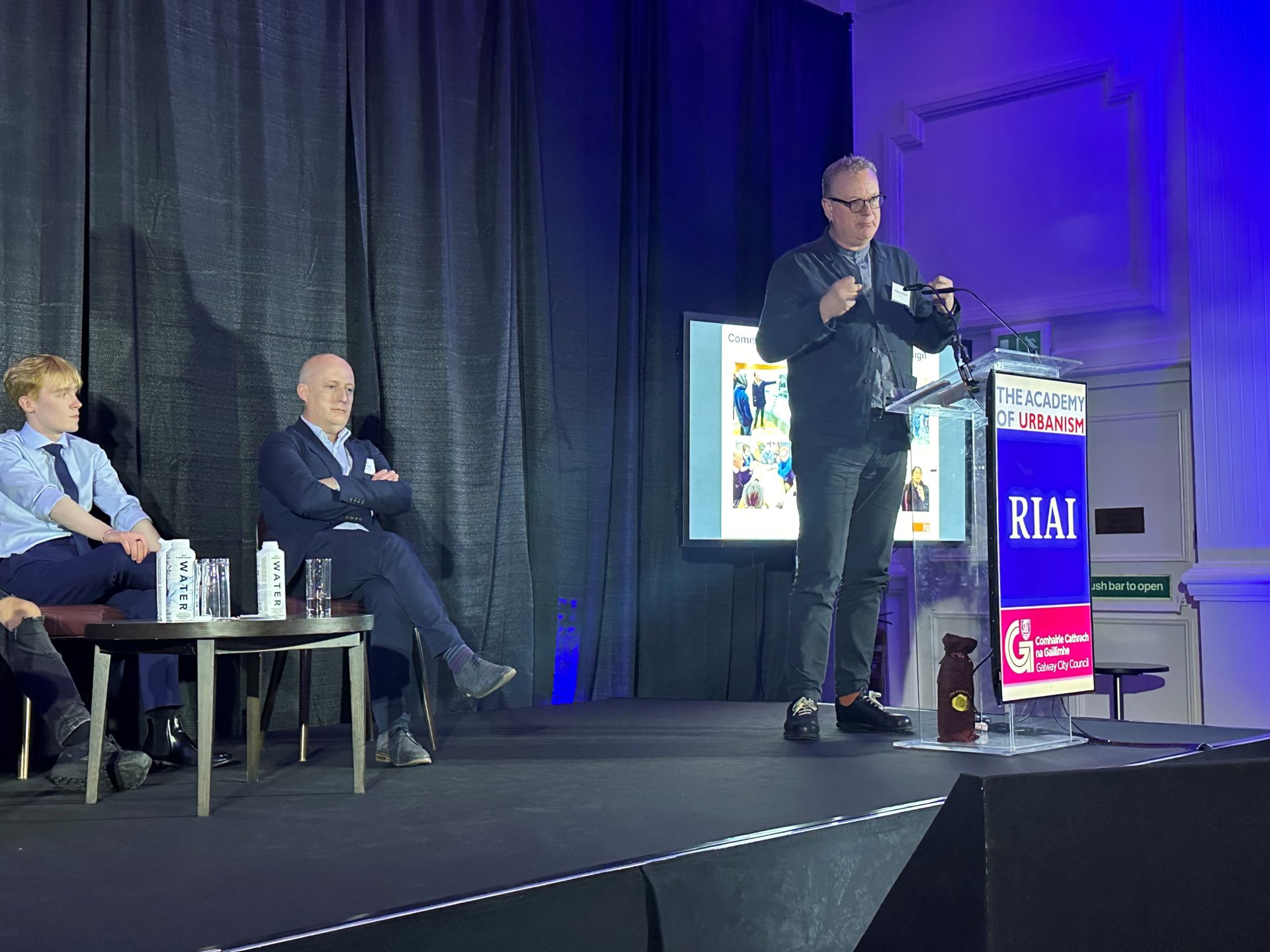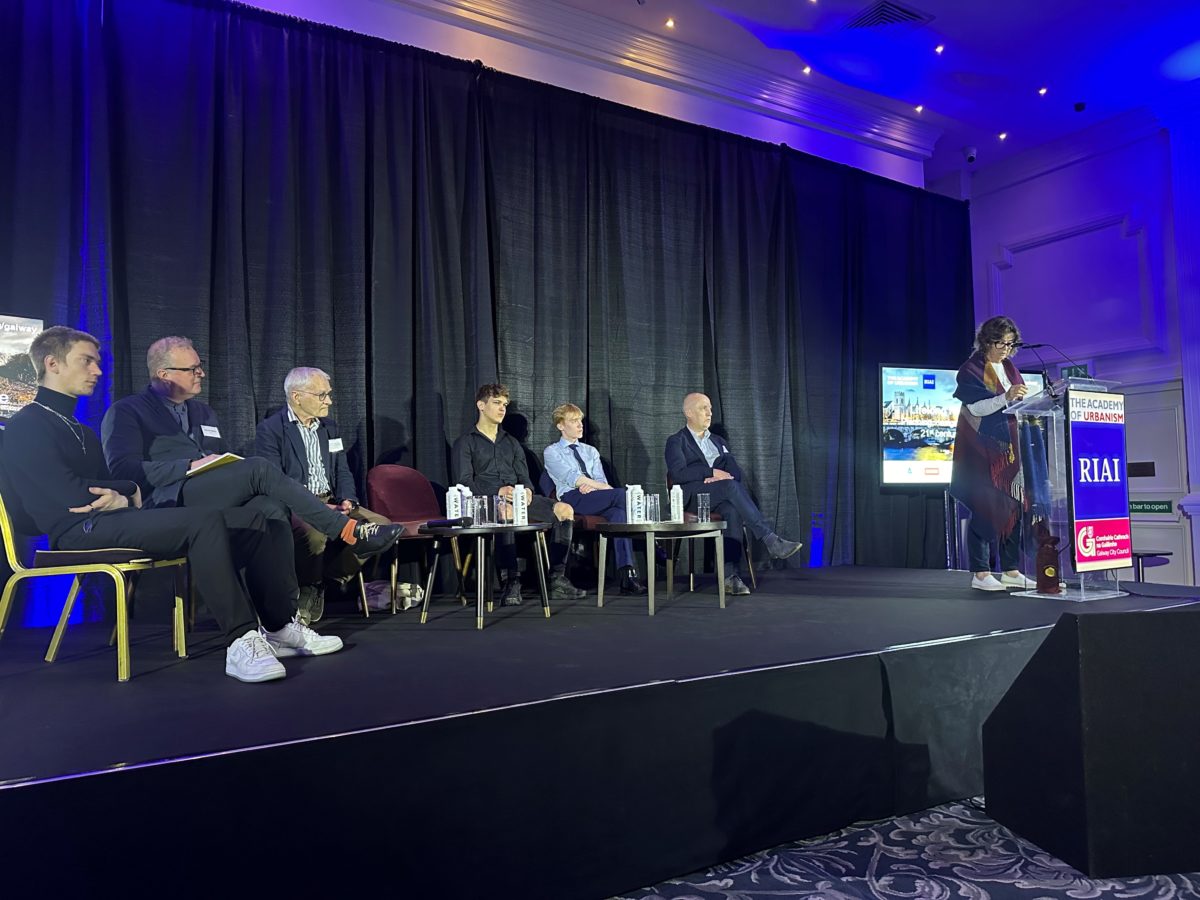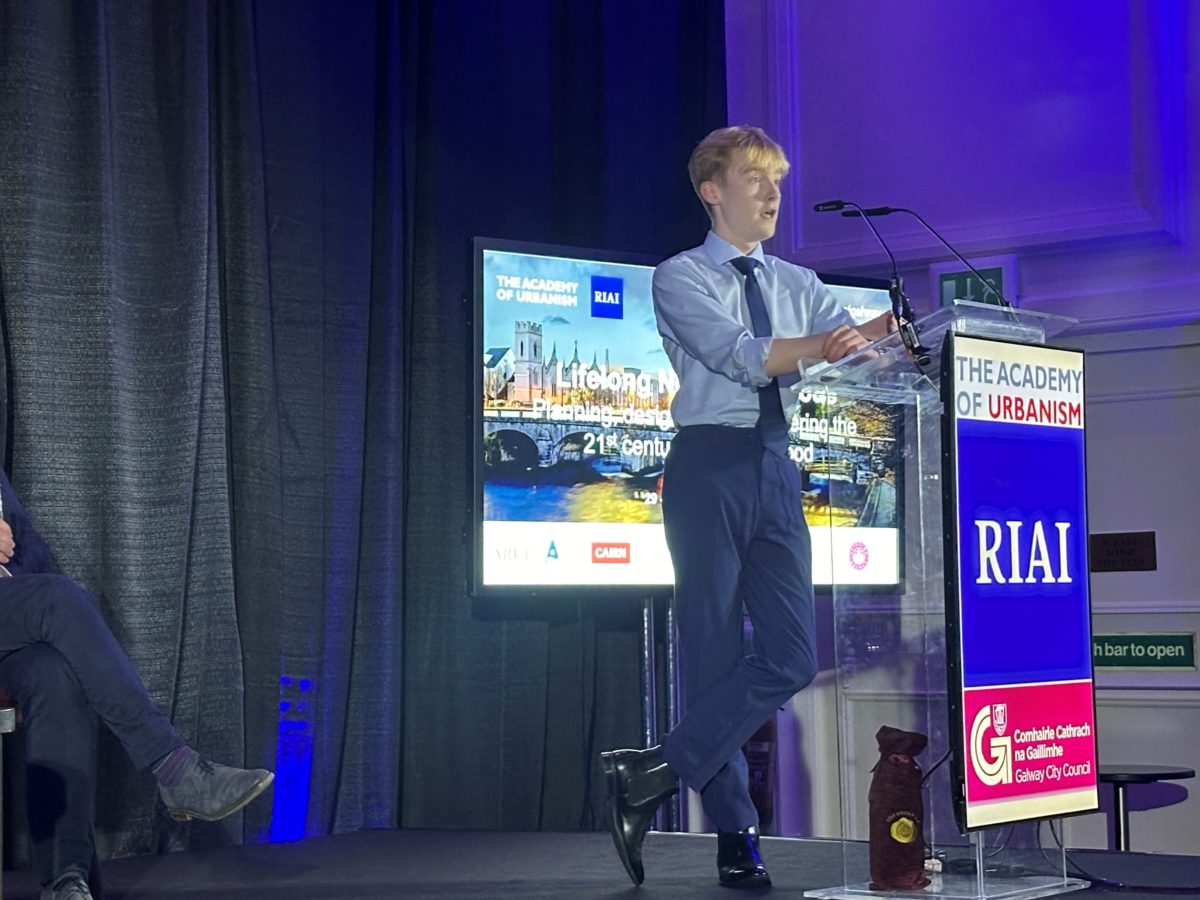Asked to respond to the outcomes from a one-day pre-conference workshop which highlighted the big issues faced by Galway’s historic Woodquay community, including provision of affordable housing and place management, Marcus examined the processes, challenges and opportunities in planning and delivering new and regenerated neighbourhoods for the 21st Century. He set out five key steps based on JTP’s unique experience over 30 years and explained how collaborative placemaking can pave the way for neighbourhoods that are not only functional and beautiful, but also inclusive and long-lasting.
1. Community aspirations & participatory design
The foundation of any successful place lies in understanding the needs and uncovering the aspirations of the community it serves. Participatory design is the cornerstone of JTP’s approach, ensuring that we consider each voice and perspective involved. JTP champions co-design processes, facilitating engagement with communities, stakeholders, and local authorities in the visioning, planning and design of their places. This approach leads to more relevant and innovative solutions, as local knowledge and insights guide the project from its inception. It not only fosters a sense of ownership within the community, but also ensures that final designs and strategies are reflective of collective needs and aspirations.
2. Co-creating a long-term vision
Once we have a thorough understanding of the community’s needs and aspirations, we work collaboratively to create a long-term vision. This illustrated vision serves as a roadmap, guiding future design and development decisions, encompassing not only the physical aspects of the project but also the social, economic, and environmental goals of the community. This long-term vision is not static and can be re-visited; it evolves with the community, allowing for continuous improvement and adaptation.
3. Building trust with open communication and early action
In the initial stages of a project, early engagement, open communication, and transparency are key to building trust. Successful processes maintain regular updates and involve community members along every step of the design journey, ensuring that they are informed and engaged. Identifying and delivering “early win” projects and maintaining an open dialogue help cement relationships and shape positive, ongoing collaboration.
4. Control over delivery
Empowering the community with control over key elements of a project is an important aspect of delivery. Community-led development ensures that the project remains aligned with the community’s aspirations and fosters a sense of pride and responsibility, ensuring the long-term success of the place. In particular, ensuring that housing provision provides for households of all incomes and striving to plug any gaps is key to sustaining strong, balanced communities.
5. Community stewardship
An effective, long-term management structure can be key in ensuring the continued legacy of effective and efficient place management services for communities, encouraging ownership and delivering accountability at a local level. It is important to consider future management as an integral aspect of placemaking.



